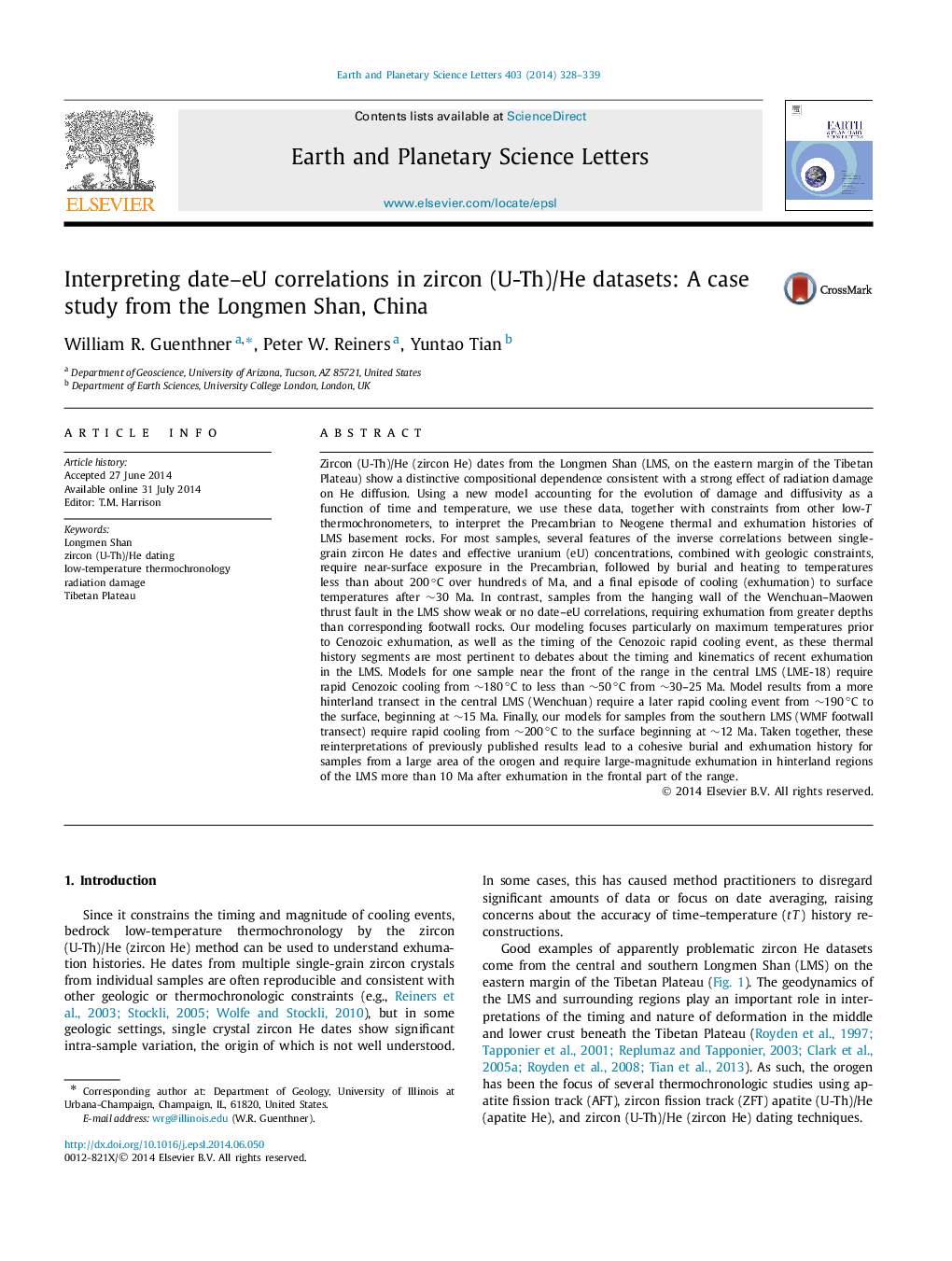| کد مقاله | کد نشریه | سال انتشار | مقاله انگلیسی | نسخه تمام متن |
|---|---|---|---|---|
| 6429142 | 1634753 | 2014 | 12 صفحه PDF | دانلود رایگان |

- Zircon (U-Th)/He dates from Longmen Shan show negative correlations with eU.
- These correlations constrain thermal histories with a damage-based diffusion model.
- New results suggest both a â¼30-25 Ma and post-15 Ma phase of rapid exhumation.
Zircon (U-Th)/He (zircon He) dates from the Longmen Shan (LMS, on the eastern margin of the Tibetan Plateau) show a distinctive compositional dependence consistent with a strong effect of radiation damage on He diffusion. Using a new model accounting for the evolution of damage and diffusivity as a function of time and temperature, we use these data, together with constraints from other low-T thermochronometers, to interpret the Precambrian to Neogene thermal and exhumation histories of LMS basement rocks. For most samples, several features of the inverse correlations between single-grain zircon He dates and effective uranium (eU) concentrations, combined with geologic constraints, require near-surface exposure in the Precambrian, followed by burial and heating to temperatures less than about 200â°C over hundreds of Ma, and a final episode of cooling (exhumation) to surface temperatures after â¼30 Ma. In contrast, samples from the hanging wall of the Wenchuan-Maowen thrust fault in the LMS show weak or no date-eU correlations, requiring exhumation from greater depths than corresponding footwall rocks. Our modeling focuses particularly on maximum temperatures prior to Cenozoic exhumation, as well as the timing of the Cenozoic rapid cooling event, as these thermal history segments are most pertinent to debates about the timing and kinematics of recent exhumation in the LMS. Models for one sample near the front of the range in the central LMS (LME-18) require rapid Cenozoic cooling from â¼180â°C to less than â¼50â°C from â¼30-25 Ma. Model results from a more hinterland transect in the central LMS (Wenchuan) require a later rapid cooling event from â¼190â°C to the surface, beginning at â¼15 Ma. Finally, our models for samples from the southern LMS (WMF footwall transect) require rapid cooling from â¼200â°C to the surface beginning at â¼12 Ma. Taken together, these reinterpretations of previously published results lead to a cohesive burial and exhumation history for samples from a large area of the orogen and require large-magnitude exhumation in hinterland regions of the LMS more than 10 Ma after exhumation in the frontal part of the range.
Journal: Earth and Planetary Science Letters - Volume 403, 1 October 2014, Pages 328-339